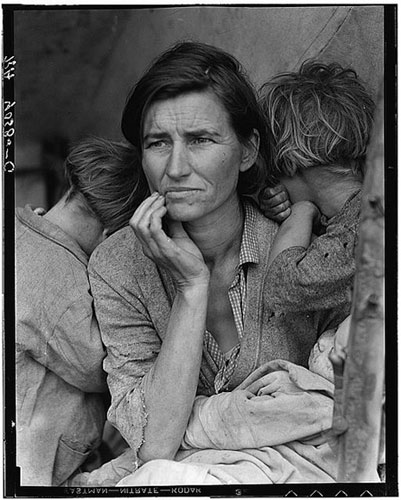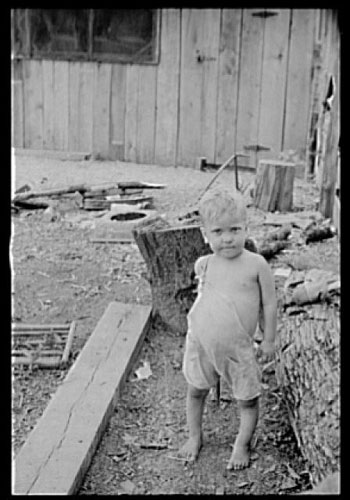| home | pg. 1 | pg. 2 | pg. 3 | pg. 4 | pg. 5 | pg. 6 | pg. 7 | pg. 8 | pg. 9 | pg. 10 | pg. 11 | pg. 12 | pg. 13 | pg. 14 | pg. 15 | pg. 16 | pg. 17 | notes | Transylvania detail 1 | Transylvania detail 2 | Wolcott detail | Bibliography | D. Gorton Homepage | Jane Adams Homepage
|
|
Reading the Photographic Record
by
Jane Adams
D. Gorton
Paper presented at the Agricultural History Society Meetings, MIT, Boston, MA, June 15-17, 2006
|
One of the best known New Deal programs is the Farm Security Administration’s (FSA) photographic project. The vast photographic archive has been mined over and over for visual evidence about the Great Depression. These photographs frame and undergird our nearly mythological attachment to and understanding of the New Deal. A good number – perhaps most famously, Dorothea Lange’s Migrant Mother -- have moved into the American iconography. They have been critiqued, appreciated, and reconstructed. They, and other historical photographs, are used most frequently to evoke times and place distant from direct experience. Viewed – and analyzed – primarily as aesthetic objects, they bear a potent emotional content through which the viewer can imaginatively travel in time and across space. |
 Destitute pea pickers in California. Mother of seven children. Age thirty-two. Nipomo, California. Dorothea Lange, Feb. 1936. LC-USF34-009058-C (re-touched) FSA/OWI . A "summary" added later states: Portrait shows Florence Thompson with several of her children in a photograph known as "Migrant Mother." |
| However, despite their ubiquitous use by historians, historians and social scientists have rarely used them as evidence in historiography. They were created, however, as documents. To be deployed as propaganda, certainly, but also do capture and fix a particular historical moments. Not a “day in the life” of America, but rather, eight years in the life of America (1935-1944) – and a most significant eight years indeed.[1] They aimed to be viewed as texts that in themselves told a story about the period.[2] | 
Arthur Rothstein, Aug. 1935. Sharecropper's child suffering from rickets and malnutrition, Wilson cotton plantation, Mississippi County, Arkansas.
LC-USF33- 002002-M2 FSA/OWI |
| home | pg. 1 | pg. 2 | pg. 3 | pg. 4 | pg. 5 | pg. 6 | pg. 7 | pg. 8 | pg. 9 | pg. 10 | pg. 11 | pg. 12 | pg. 13 | pg. 14 | pg. 15 | pg. 16 | pg. 17 | notes | Bibliography | Transylvania detail 1 | Transylvania detail 2 | Wolcott detail |
|
|